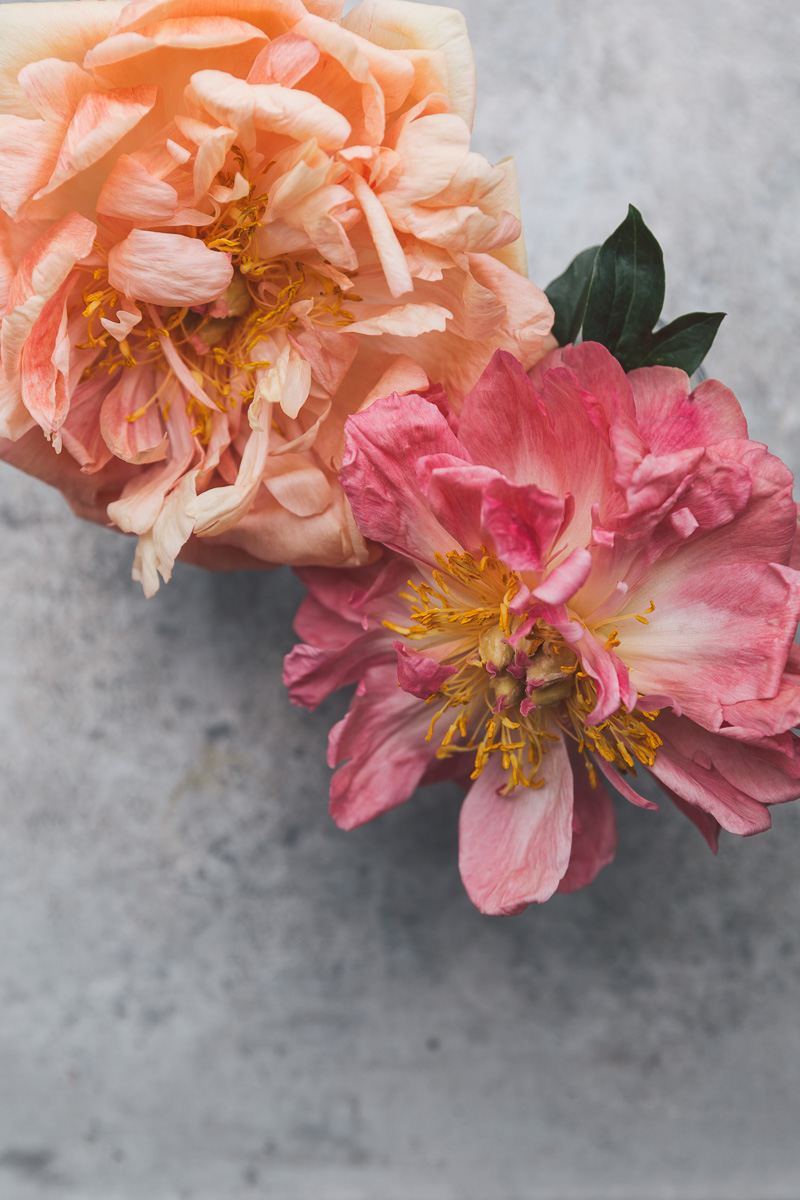Ok. It’s time to get real with y’all. I have struggled with my weight for pretty much my entire life. As I wrote about in this post, I was a chubby bi-racial kid growing up in a super white, rural farming community. We moved to Wichita when I was 9, where I was the chubby brown girl who didn’t quite fit in with the white kids and wasn’t quite accepted by the black kids. I have a vivid memory of bawling my head off around this age because my hair wasn’t long and straight and blond like my mother’s. From the time I can remember anything, I remember feeling like I didn't belong.
As a single-parent, my mom worked a lot when I was little. I spent most of my days with my grandparents, both of whom had lived through the Great Depression. They kept their house stocked to the rafters with every manner of foodstuff imaginable. They fed me sugar cereal, mac-n-cheese and candy bars. Fried chicken, frozen pizza and Hostess fruit pies.
Food was love. And they loved the shit out of me.
It was the early 80s and we didn’t know as much back then about how sugar and processed carbs are essentially garbage. I know my grandparents just wanted to spoil me--their only grandchild for 9 years--and make sure I never went without the pleasures they had to forgo as children.
Food was my solace and my secret shame. By the time I was 12, I had a full-on eating disorder. I wanted to be thin and popular and look like the other girls at a time when almost no one looked like me. But I needed food to assuage my awkwardness and my fear of not being good enough. It was a vicious cycle.
Fast-forward to adulthood. I’ve learned to love myself and love the body that I’m in. But it’s been a long road. From the time I graduated college until today, I’ve experimented with a vast panoply of diets. Weight Watchers. The Zone. Atkins. Keto. Low-fat. High-fat. Intuitive Eating. Extreme calorie restriction. The works.
Things started to get better in the body kindness department the day I banished my scale. That sly dictator lounging under the bathroom sink had been running my life for years. I decided he had to go. Not weighing myself has been a major boost to my self-esteem. (And I’m serious about it--I don’t even let my doctor tell me my weight when I go to see her.)
Next came finding a way of eating that works for me. I’ve been tweaking this over the past couple of years, but the gist of it is that I go easy on the sugar and carbs. I’ve learned that counting calories is absolutely toxic for me; I quickly tip over into crazytown if I go down that path, anxiously obsessing over everything that goes in my mouth.
I’m currently eating slow carb, which means lots of vegetables, protein, healthy fats and unrefined carbs, like beans and lentils. And zero calorie counting. Saturday is a free day when I eat whatever I want. So I don’t feel like anything is permanently out of bounds. (A girl has to get her pizza on from time to time!)
On the exercise front, I’ve decided only to do activities that I would do even if they burned no calories. I will play tennis in the freezing cold or blistering heat. I'd play in the rain if I could. There’s almost nothing that can keep me off the courts. So this is definitely on the list. I do strength training that involves a lot of balancing and compound movements because it feels like play and makes me feel strong and capable. And I walk with Beau in the evenings. That’s it.
So, about these beans.
A slow-carb lifestyle involves A LOT of beans. And though I love beans in all their many shapes and sizes, here’s the truth of the matter: beans can get pretty boring when you eat them night after night.
One evening, I decided to toss some beans in with the vegetables I was roasting. What came out of the oven was AMAZING. (Some might even call it culinary genius. I’m not saying who.) These roasted beans were crispy on the outside and pillowy soft on the inside. Like dreamy little roasted potatoes. Or tater tots. Only healthier.
Now I am obsessed with roasted beans. They are my new go-to weeknight starch. I toss them on a sheet pan along with whatever vegetables I have lazing around in my fridge. Thirty minutes later--voilà! Supper is served. If you’re feeling fancy, poach a couple eggs or throw a piece of fish on the grill to serve alongside. Add a squeeze of lemon or a few dashes of hot sauce. It’s hard to go wrong.
For those of you who are perhaps less experimental in the kitchen, here is a recipe to get you started. You roast up a tray of plump corona beans (or gigantes or any other large bean really) with a bit of shallot. Grill up some squid (if you’re into seafood). Add some shaved fennel for crunch and a fresh, zingy chimichurri and your weeknight supper just got extra sexy.
Wherever you are in your relationship with food and your body, I think you can feel pretty good about this salad. It’s delicious whole foods, simply prepared. Miles away from Kraft mac-n-cheese and Hostess fruit pies. But with all the love.
XO,
Olaiya
Roasted White Beans with Fennel and Mint Chimichurri
- 4 cups cooked corona beans (or other large white beans), rinsed
- 1 medium shallot, sliced
- Extra-virgin olive oil
- Sea salt
- finely grated zest of 1 lemon
- 2 tablespoons lemon juice, plus an extra squeeze for the fennel
- 2 large cloves of garlic, finely minced or pressed
- 1 teaspoon chopped calabrian chiles in oil or a generous pinch of chile flakes
- 1/2 cup roughly chopped fresh mint, plus additional mint to garnish
- 1/2 medium fennel bulb, fronds reserved for garnish
- 1 recipe Grilled Squid (see below), optional
*Notes: Canned beans will work for this recipe, but home cooked beans are best. Plus it's difficult to find large beans like coronas or gigantes in a can. Here are some tips on how to cook a perfect pot of beans.
- When it comes to Calabrian chiles, I love this brand. (Seattle friends: I buy these at PFI in SoDo)
- Grilled octopus would also be delicious in this recipe!
Preheat your oven to 475° F.
While the oven is preheating, dry your beans thoroughly with paper towels then transfer them to a sheet pan lined with parchment paper. Scatter the sliced shallot over the beans and sprinkle with salt. Drizzle generously with olive oil and toss to coat the beans and the shallot. When the oven is hot, roast the beans, stirring occasionally for even browning, for 12-20 minutes. The exact time will depend on the size of your beans and how wet they are when they go in. You want them to be golden brown in spots, crispy on the outside and tender and fluffy on the inside. Don't worry if some of them split open. Remove them from the oven and set aside to cool.
While the beans are cooking, make the chimichurri: in a medium bowl, stir together 6 tablespoons of the olive oil along with the lemon zest, juice, garlic, chiles, mint and a pinch of salt.
With a sharp knife, Japanese slicer or mandoline, thinly slice the fennel and place it in a bowl. Toss it with a tablespoon or so of the chimichurri and an extra squeeze of lemon juice. Taste and add more chimichurri or lemon juice if you like.
When the beans have cooled somewhat, drizzle most of the chimichurri over them (save a tablespoon or so if you are making the squid). Toss to coat. Season to taste with more salt if necessary. Place the seasoned beans in a serving bowl and top with the dressed fennel and the grilled squid (if you're adding them). Sprinkle the reserved mint and torn fennel fronds over the salad and serve.
Tender Grilled Squid
• 1 lb. squid, cleaned, cut into large pieces and patted very dry with paper towels
• Extra-virgin olive oil
• Sea salt
*Note: You can buy cleaned, pre-cut squid from your fishmonger or clean it yourself, which is a lot cheaper. Here's a video if you need help.
Heat a large pan over high heat for a minute or so. Add enough olive oil to film the bottom of the pan, then add the squid pieces. Cook, stirring occasionally, until the squid is opaque and just barely cooked through, 2-4 minutes. It will give off a lot of water. Don't worry, this is normal. Do not overcook the squid or it will get rubbery.
Immediately transfer the squid to a large plate to cool. While the squid is cooling, heat a grill or grill pan to high heat.
Toss the squid in olive oil to barely coat (use some of the mint chimichurri if you have it) then grill until char marks appear, 1-2 minutes. Turn and grill for another minute or so until char marks appear on the other side. Transfer to a bowl to cool or eat immediately.







































